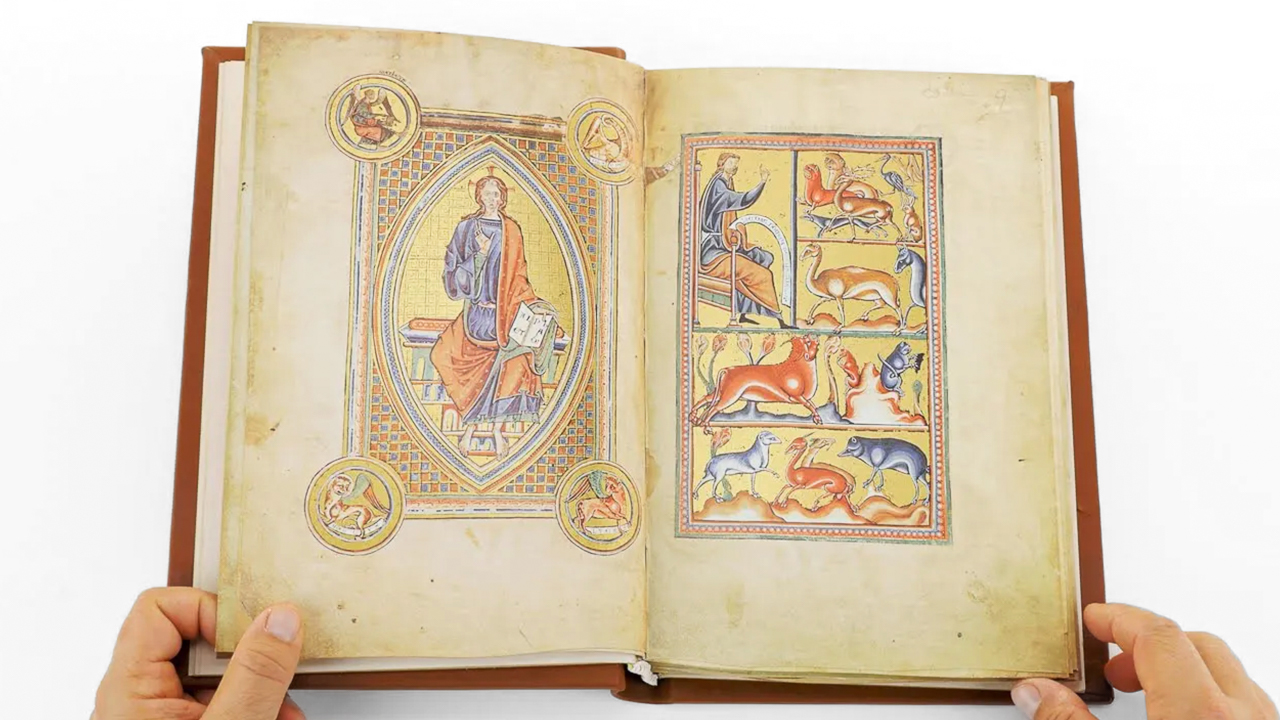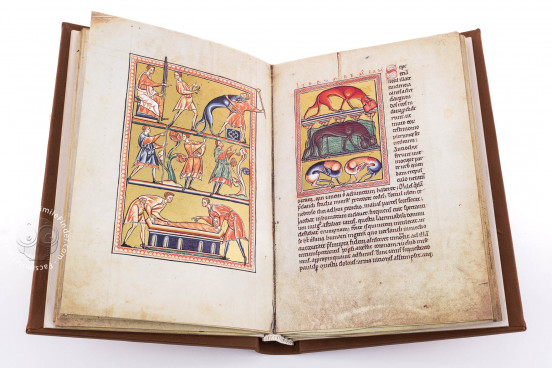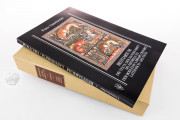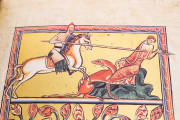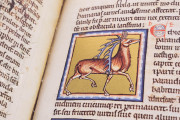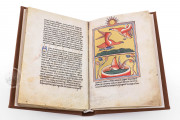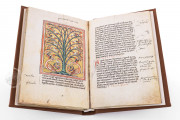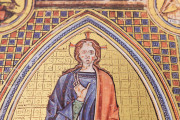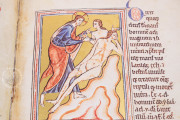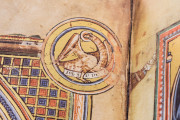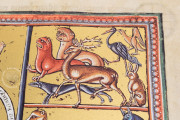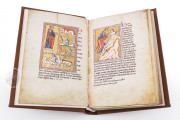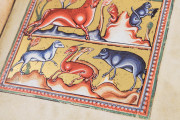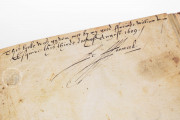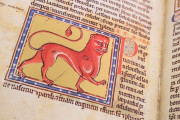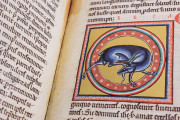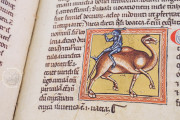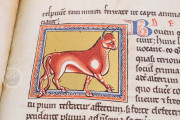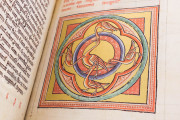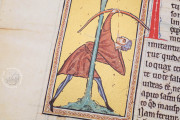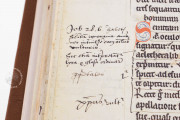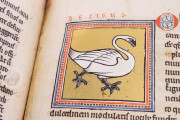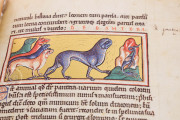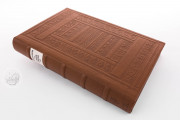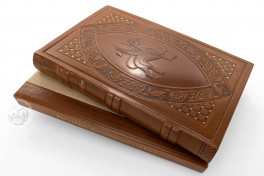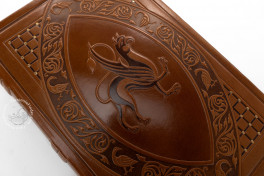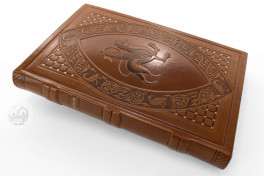The Ashmole Bestiary was produced in early thirteenth-century England and boasts 131 miniatures in vibrant hues set against burnished gold backgrounds. It opens with an account of Creation based on Genesis that ends with a pair of full-page miniatures, one depicting Christ in Majesty and the other Adam naming the animals. The main text concerns individual animals, starting with the lion, and embraces a consideration of various species of birds. It is one of the most opulent and sumptuously illuminated of the English bestiaries of the period.
Extremely widespread during the late twelfth century, bestiaries were illustrated animal books whose depictions related to the Biblical text in allegorical ways. The Ashmole Bestiary is possibly one of the best examples among books of this kind from the central middle ages.
The Ashmole Bestiary: An Opulent Work of Art
With its lavish gold-leaf inserts, this manuscript is exceptional for both its depictions of animals in matte though brilliant colors, but also for the illustrations depicting plants, trees, and human characters. The artist's sense of symmetry, the sophisticated decorations and diaper-pattern backgrounds suggest that he truly was a master in his art.
A Universe in Miniature
The 131 animal miniatures in the Ashmole Bestiary are really incredible: their depictions of birds, snakes, worms, and fish are often fantastic and marvelous. One can often find a crocodile with a snake's head and bird paws, an eccentrically colored panther, and so on. These allegorical depictions were certainly based on the artist's free interpretation of what he could find in other treatises and books.
We have 2 facsimiles of the manuscript "Ashmole Bestiary":
- BESTIARIUM. Facsimilé du Manuscrit du Bestiaire Ashmole 1511, Conservé à la Bodleian Library d'Oxford facsimile edition published by Club du Livre, 1984
- Bestiarium facsimile edition published by Akademische Druck- u. Verlagsanstalt (ADEVA), 1982

